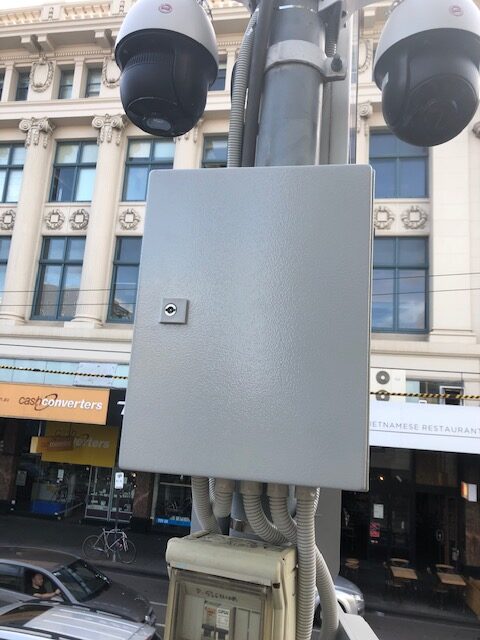Stonnington Council - Video Data Capture Pilot Project
The Challenge
The City of Stonnington is a local government area located within the metropolitan area of Melbourne. It comprises of the inner south-eastern suburbs of South Yarra, Prahran, Windsor, Toorak, Armadale, Kooyong, Glen Iris, Malvern and Malvern East. All of these suburbs are located within 10km of the CBD and are sought after places to live, work and play.
With high levels of population density and commercial activity, traffic monitoring and control is an integral part of Stonnington’s city planning and management strategy with data capture and analysis being a core requirement. Particularly along the main thoroughfares the roads are often congested with slow moving traffic, which restricts the effectiveness and accuracy of commonly used systems to capture traffic information, such as pneumatic/rubber tube counters. Adding to this, tram tracks along many of the main roads prohibit the installation of such systems.
In light of the above, Stonnington requested SCS to develop a video-based solution to monitor and analyse bicycle traffic along the main section of Chapel Street and to leverage the same system for other monitoring use cases, such as car and pedestrian counting.
Client
City of Stonnington
Location
Victoria, Australia
SCS Solution
Video Analytics
Our Solution
SCS designed a solution for the project with our technology partner iOmniscient, a Sydney-based firm specialised in computer vision software and video analytics tools. The system comprises of cameras mounted on street lighting columns and tram poles capturing video footage of cars, cyclists and pedestrians. Edge computing devices run the smart AI software and analyse the video footage recording data points such as interval counts of cyclists, cars and pedestrians passing by, speed of passing objects, and occupancy of on street parking spaces.
The video footage is deleted after analysis and only the meta data is stored on the edge devices. No personal information is saved or sent from the devices. The edge device uses an integrated cellular modem to send the meta data to an external server at pre-defined time intervals. The modem also provides remote access for SCS to calibrate, update and maintain the software and to install additional software modules to experiment with and test other features; such as near miss detection, jaywalking, crowd monitoring during public events and at night time, graffiti detection, and others.
The data is sent to a cloud data base where it is securely stored and access is provided via a cloud dashboard with individual user log ins. The dashboard allows approved users to download data sets in several standard formats, to run and save specific data queries for analytics, and to build custom dashboards. Approved users from the same organisation can also share their analytics and collaborate on data queries and on building custom dashboards.
The solutions stack runs on Amazon Web Services and all data is stored in Australia.
SCS design the project and delivered the system as an end-to-end solution, including:
- obtaining all required approvals from utilities and the department of transport,
- managing the installation and commissioning of the system,
- calibrating and testing the system until the desired level of counting accuracy was achieved (>90%),
- data dashboard set up and training,
- ongoing support services, e.g. regular system health checks, data accuracy tests, software maintenance and upgrades, data cleansing and storage, system optimization and expansion if and as desirable.
Key Customer Outcomes
- Accurate and reliable information about traffic flows on major roads.
- Cloud hosted data storage with simple access through dashboard to analyse and derive insights for decision making.
- Improved decision making for city planning and operations such as road maintenance, planning for road works and improvements, parking regulations, foot traffic data for shops and cafes, and more.
- Ability to fine tune system as required and to add other features to explore new use cases.









